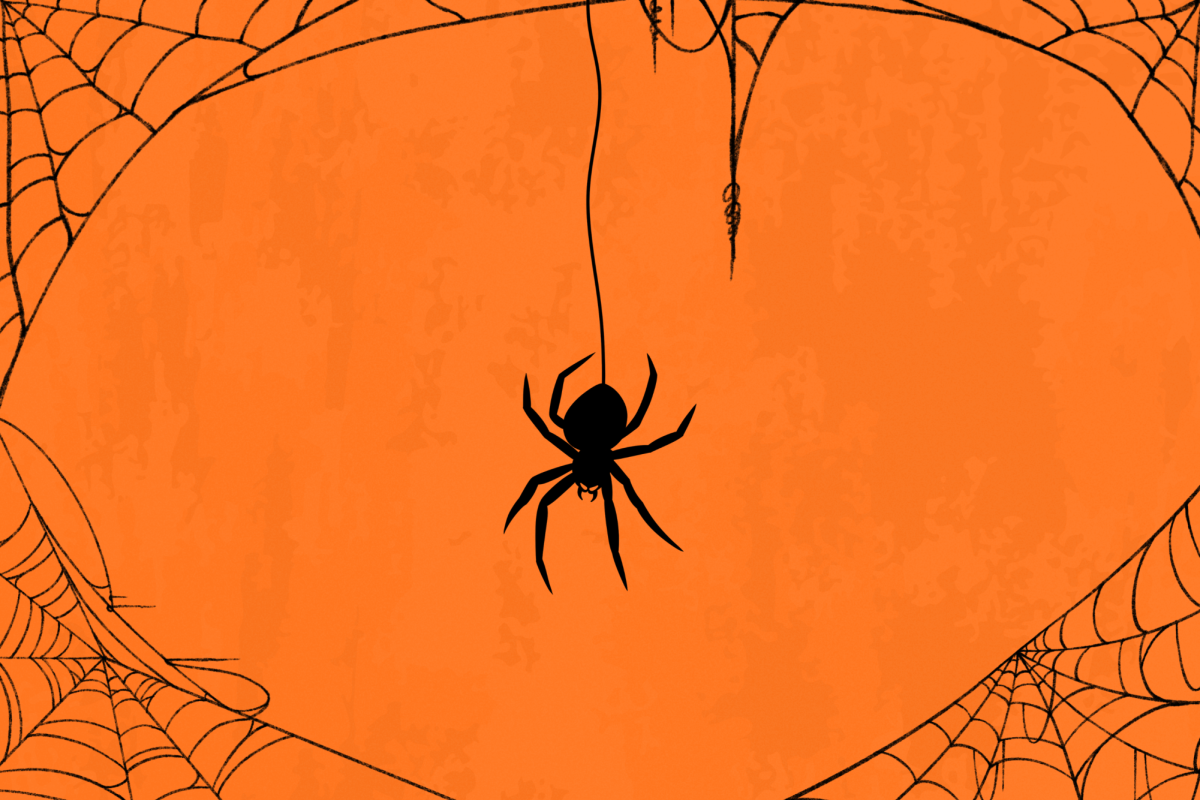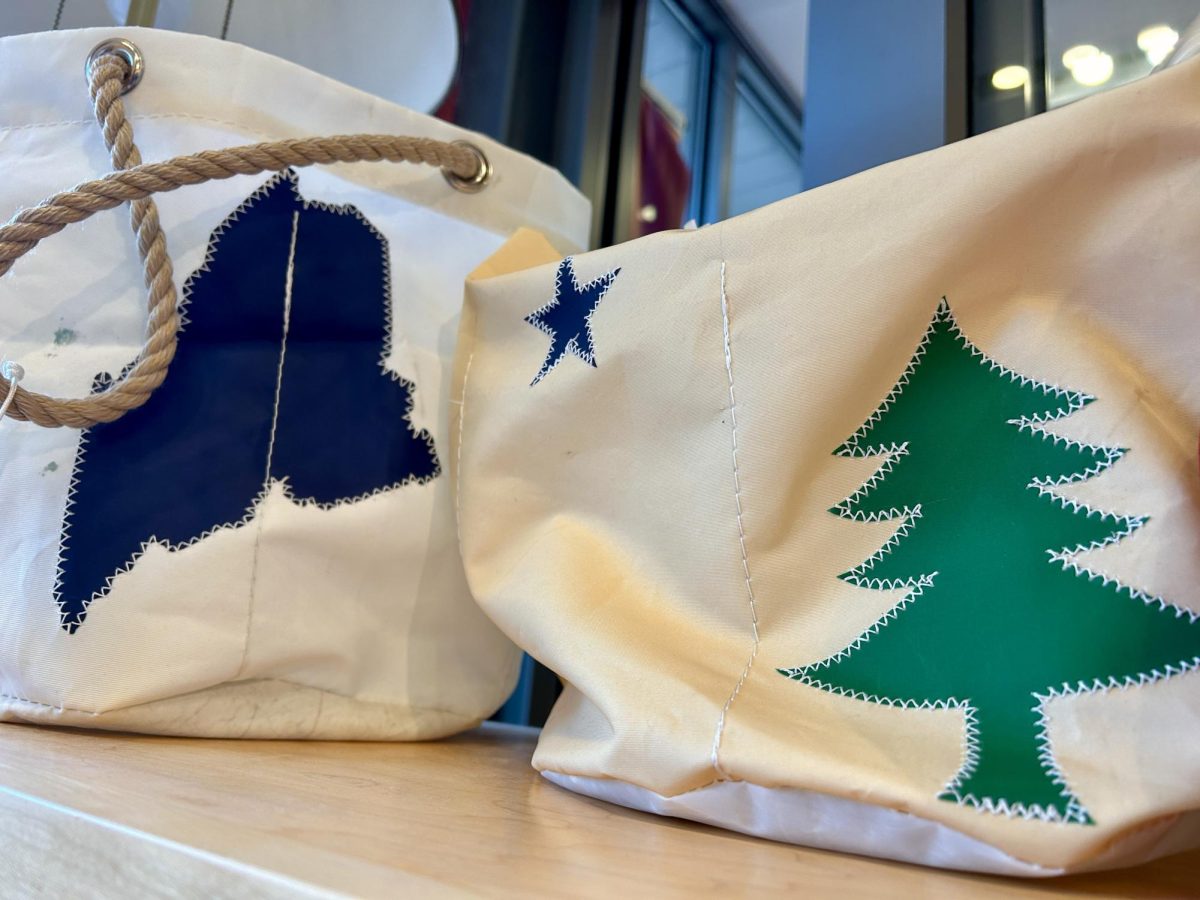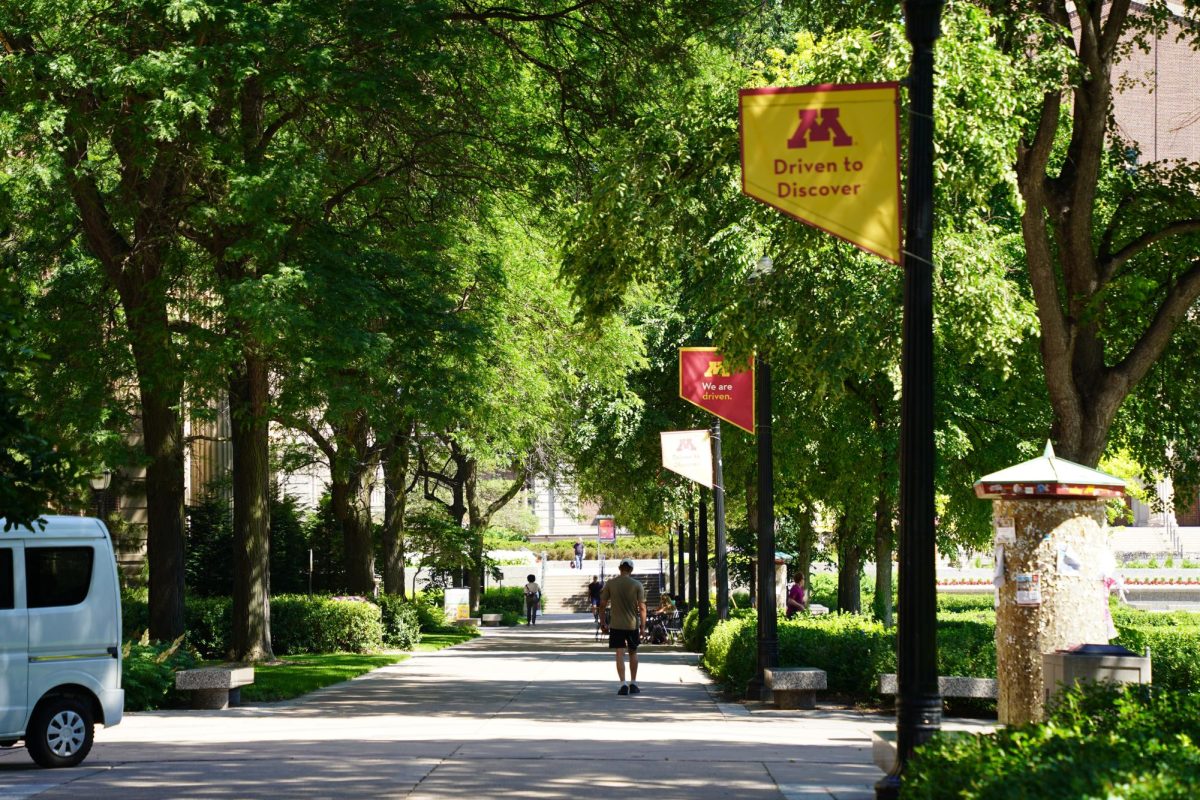Since gaining statehood in 1820, Maine has flown two different official flag designs. Soon, it could move on to its third – sort of.
A referendum on the Maine ballot this year – Question 5 – asks voters to shift the state flag from its current design back to the first ever flag Maine had: the 1901 Pine Tree flag. Depicting a pine and the North Star on a buff background, this flag hasn’t been officially used since 1909 – but it has gained popularity in recent years.
In 2017, the Maine Flag Company created a modernized version of the 1901 design with a pine tree based on the one from the 1939 Merchant and Marine flag. According to co-founder and co-owner Chris Korzen, when the company released a limited line of around 30 of these flags in December 2017, “they flew off the shelves.”
Since then, the popularity of the Maine Flag Company’s version of the flag has only grown, and can be seen on flagpoles and merchandise across the state.
In the Maine House of Representatives, then-Representative Sean Paulhus (D-50) sponsored a bill in 2023 that would change the flag back to its 1901 design. With mixed support for the idea, the legislature eventually agreed to put it on the 2024 ballot for voters to decide.

“[Constituents] liked the original 1901 design as a way to show off their pride of their state,” Paulhus said. “We are known as the Pine Tree State, and the pine tree has a long history in New England and Maine. It’s about restoring a symbol.”
Paulhus’ bill, which became official law on Jan. 7, contained the same language as the original 1901 flag code: the flag “must be buff, charged with the emblem of the State, a pine tree proper, in the center, and the North Star, a mullet of 5 points, in blue in the upper corner.”
Any design that adheres to this code, whether the Maine Flag Company’s version or the one adopted in 1901, would count as an official flag of Maine if the referendum passes. The language of the bill, however, prompted the Secretary of State to hold a contest to determine which design would be flown by state buildings. In August, architect Adam Lemire of Gardiner, Maine, won that contest.
“Maine deserves a distinct flag,” Lemire said. “There are 20-ish other states that have a blue background with a seal…I think that that representation of us as being a unique state and then a unique place which I chose to live in…is really a powerful symbol.”

Lemire said creating the flag was a designer’s exercise rather than an artist’s exercise for him. Having designed many logos in the past, he was well-prepared. But he described how finding the perfect Eastern white pine – state tree of Maine – and deciding on the flag’s stylization was an exercise in state pride more than anything else. A lot of that pride has grown for Lemire with his 3-year-old son, Reid.
“He’s just starting to get the concept of Maine,” Lemire said of Reid, noting that his son now understands that he lives in Maine and seems to take some pride and curiosity from that. “We walked around [the Maine State House] and looked for Eastern white pine. And he’s so cute – every time we drive by the State House, he says, ‘Oh, that’s the Maine State House,’ every single time.”
Lemire’s Eastern white pine is located in the Governor’s Grove, where a tree is planted for every governor of Maine. His drawn version has 16 branches, one for each county in Maine, and three roots – one for each branch of government, harkening back to the original 1901 flag. None of these details were given to the flag selection committee when he submitted his design: according to Lemire, only the design could be submitted, with no additional information.
Korzen, Lemire, and Maine State Historian Earle Shettleworth all noted the pine tree’s significance for the state of Maine.
“Here we are in 2024 and yet 90% of the Maine land is still forested,” Shettleworth said. He remarked that in the 1820s, when Maine was founded, it “was emerging as a major producer of lumber, and particularly of lumber from pine trees.”
All three noted the reference to native Wabanaki people, too, alongside later settlers.
“That’s certainly a significant consideration of the forests of Maine, that they were the home to the Native Americans for over 10,000 years before the Europeans came,” Shettleworth said.
But the pine has meaning for modern Mainers, too. Lemire spoke of a lifelong love of hiking that drew him out to the pines in his home state of Vermont, and now does the same in Maine with his young children. Meanwhile, Korzen described how as he spoke, he could see a stand of Eastern white pines from his pickup truck.

The current Maine flag, adopted in 1909, features an Eastern white pine tree, too. The design includes the state seal on a plain field of blue. Plain and mundane as it may seem, it too has an important historical significance, according to Shettleworth.
Though Maine gained statehood in 1820, it did not have an official flag until 1901. But since 1820, its seal has remained the same, featuring the pine, a moose, a mariner, and a farmer, meant to represent Maine’s vital ties to both land and ocean. Early, unofficial versions of the Maine flag featured this seal on a plain field, and were famously flown by Mainer troops during the Civil War.
“It’s believed that the reason that that change occurred in 1909 was because many, many people at the time felt that we should have a flag that was more aligned with the Civil War battle flags,” Shettleworth said. “And in 1909 there were still quite a few veterans of the Civil War living. In fact, some of them were probably in the Maine legislature.”
Today, though, “those who favor the 1901 revised flag feel very strongly that the 1909 version is outdated, and that modern or current state flags have actually been revised in a number of states across the country to create a simpler, more identifiable design,” Shettleworth said.
Support for this measure is not universal, however. According to Paulhus, not a single Republican voted for the bill in the House of Representatives. Some worry that the cost of replacing all state flags would be extreme, though the Bangor Daily News reported in October that most state flags are replaced regularly due to wear. Others wish to preserve the current flag’s commemoration of Civil War veterans.
Despite his company’s role in repopularizing the 1901 flag, Korzen isn’t sure it’s the right time for this referendum, though he gave no official position for or against it.
“My fear has been all along that it was going to become divisive, and we’ve certainly seen that through this process,” Korzen said. “I wrote an op-ed piece for the [Portland] Press Herald about a year and a half ago, saying, ‘Look, we shouldn’t do this until everybody’s on board with it.’ We started making that original Maine flag because we were hoping it would be something that would create pride and unity in our state.”
Earlier this year, the Press Herald reported that right-wing extremists were using a similar design to the 1901 flag to claim that the 2020 election had been stolen, potentially adding another layer of conflict to the issue.
Some have also expressed concern that removing the seal and replacing it with just one of its elements limits what aspects of Maine it can represent. Korzen disagrees.
“I don’t know if the purpose of a flag is really necessarily to be a representation of a place. It’s certainly something that others would know that place by,” Korzen said. “A lot of state flags are very similar to Maine’s flag, even our friends in New Hampshire next door. They can’t be distinguished from any distance, and so we do like having a symbol of Maine that is more distinct and more interesting.”
Another worry that Korzen has with the new flag is that it incorporates realism. While Korzen personally prefers flags that are more stylized, he also said it may pose problems for manufacturing the flag.
“To my knowledge, nobody in Maine has the capability to print a flag, which means anyone who’s using a more photorealistic design for the 1901 flag is going to have to take their business out of state,” Korzen said. “We are proud of our commitment to manufacturing in Maine, which is why we will continue to make flags with the stylized 1939 tree.”
Shettleworth, who declined to state his own position on the referendum, said that he hadn’t detected a lot of partisan lines in the flag debate, but was glad the legislature hadn’t decided on the issue itself.
“As State Historian, I just feel that it’s great that this issue has been brought forward for decision by the voters of Maine,” Shettleworth said. “We’ll see what the will of the people is in this issue.”
As for Lemire, he hopes the referendum will pass. Partly because he wants Maine’s flag to be more distinct, but also because of what prompted him to care about this issue all along – his young children.
“They can see and recognize and appreciate the pine tree flag, in a way that I don’t think that kids can really appreciate our state seal, as much as people like to say that the state seal represents Maine fully,” Lemire said. “I think just sticking to something as simple as the North Star being ‘we lead’ and the pine tree as ‘we are in the Pine Tree State,’ I think that there’s something a little bit more singular and beautiful about that.”
This story was originally published on The Bates Student on November 2, 2024.










































